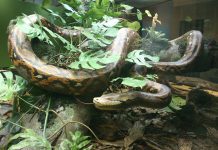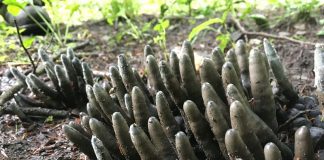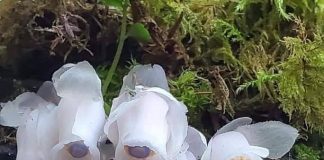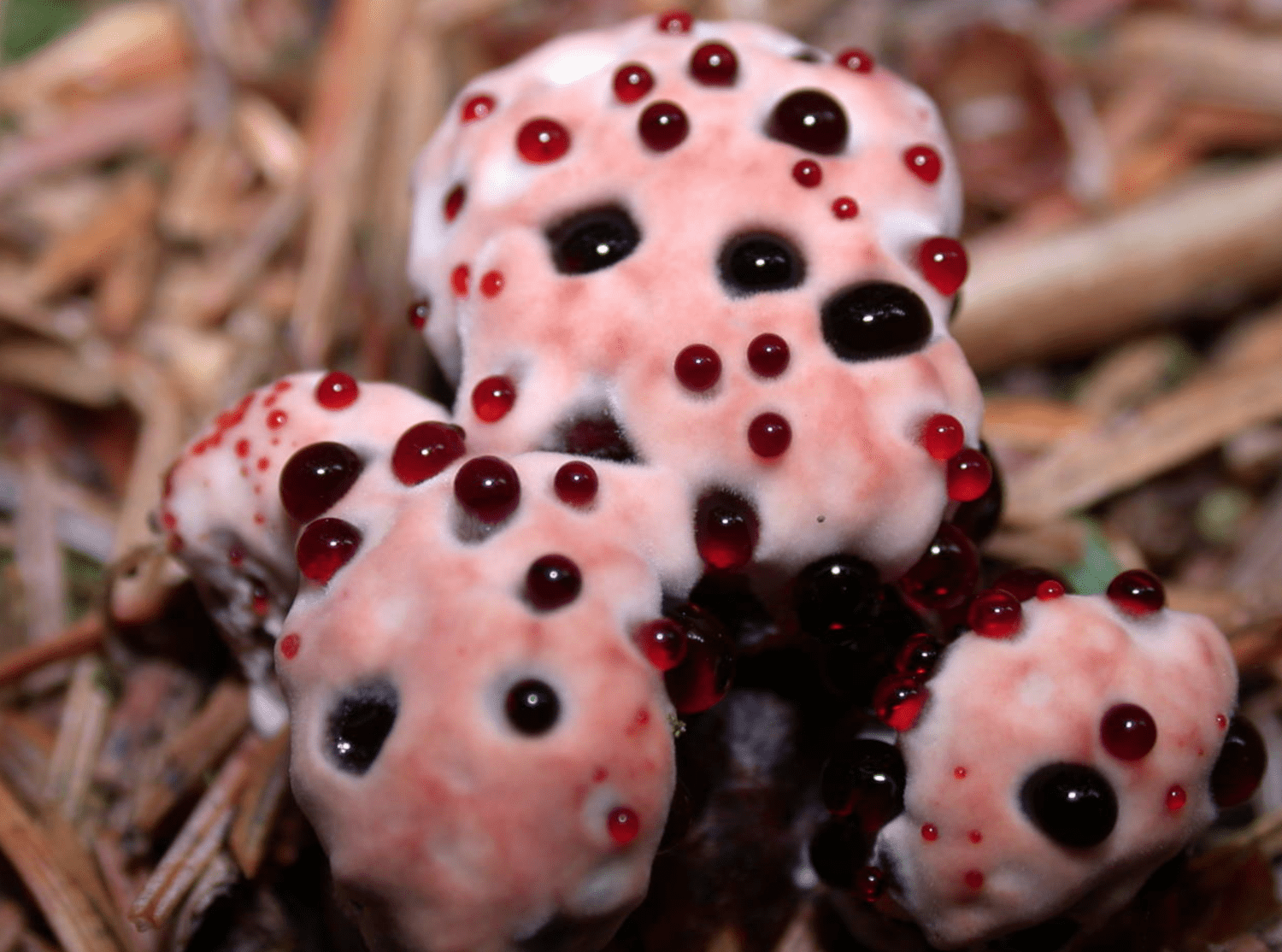
Wild mushrooms are full of amazing wonders. They can be innocent looking, but they can be deadly if eaten. Some look sinister, but they are perfectly harmless. Then there’s the Hydnellum peckii Or, as it is locally known, the bleeding tooth fungus.
This bizarre fungus is not known by just one name. It’s sometimes called the “devil’s tooth”, while others refer to it as “strawberries and cream”. This last name is more appropriate as it describes the unusual fungus without the excessive melodramatic effects that some other names can have. What is bleeding tooth fungus? What should you know? How can you handle it if it is found in the woods?
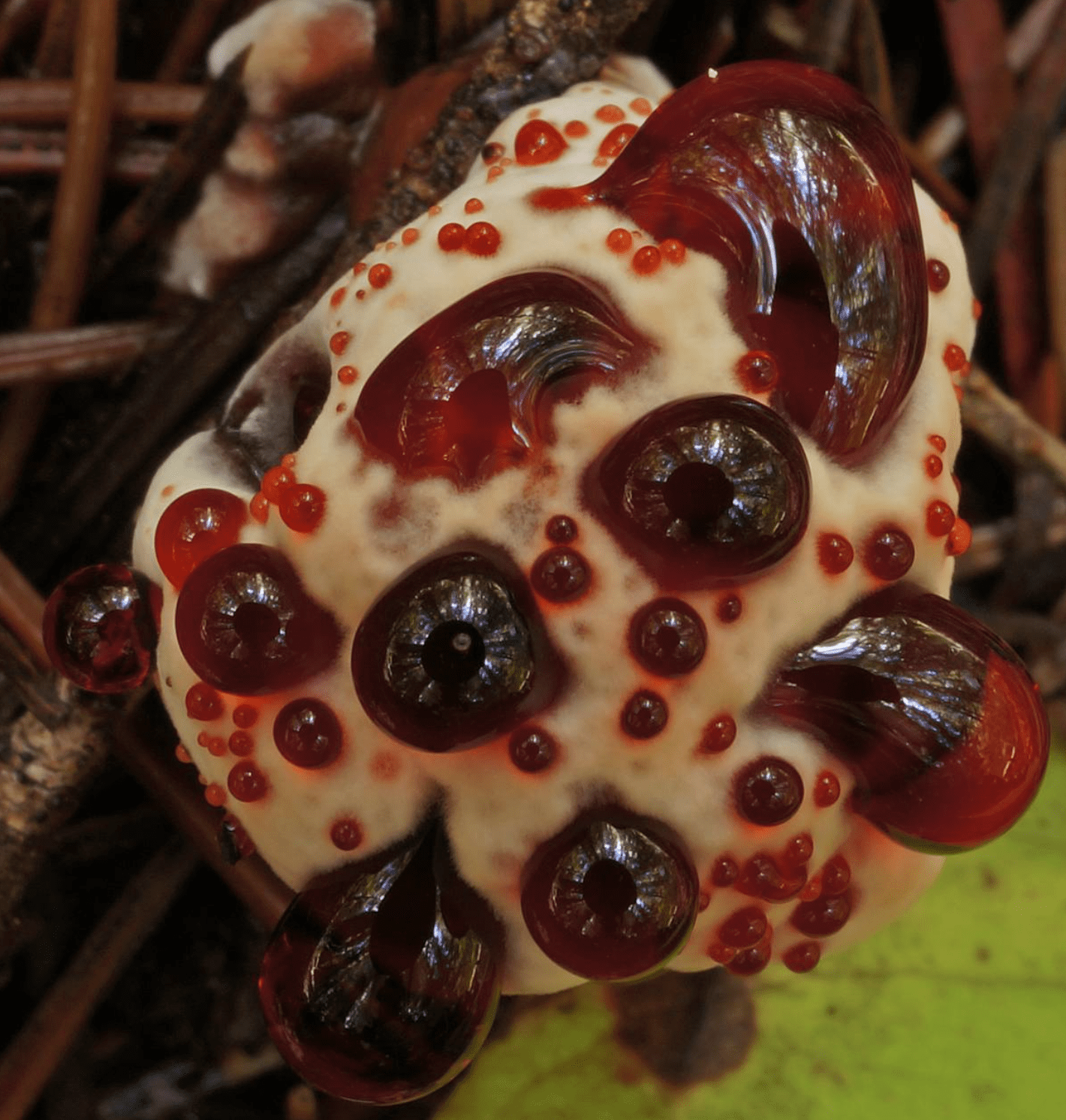
The Truth About Bleeding Tooth Fungus
The family that includes the bleeding tooth fungus is as diverse as you can imagine. The one thing that unites this family is the fact that all species have teeth. These teeth aren’t actually teeth. They are part of the fungus, and they are used to produce spores instead of attacking.
It is easy to understand why people may mistake bleeding tooth fungus for a sci-fi critter. It resembles a wild predator, with its long teeth and red goo bubbling under the skin. It’s easy to understand why people confuse the bleeding tooth fungus’ spore-producing teeth with something sinister from horror movies.
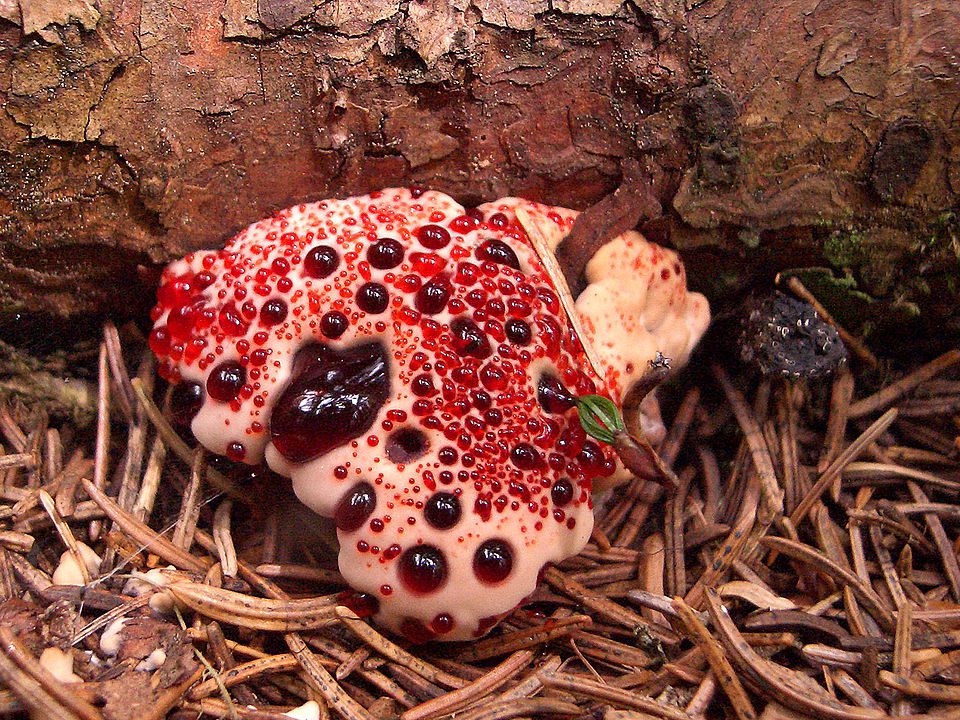
The part that looks like bloodied teeth on the surface may be harmless. But the truth is, it is quite different. The roots of the fungus are underground and spread all over the earth in search of nutrients. They get most of their nutrients from the roots of other plants in their immediate vicinity.
This doesn’t necessarily mean that the bleeding teeth fungus takes nutrients from other plants. Both plants live in a symbiotic ectomycorrhizal relationship. The fungus receives the nutrients it needs, while the soil breaks down the organic matter for the tree to absorb. As you can see, our fungus is not sinister.
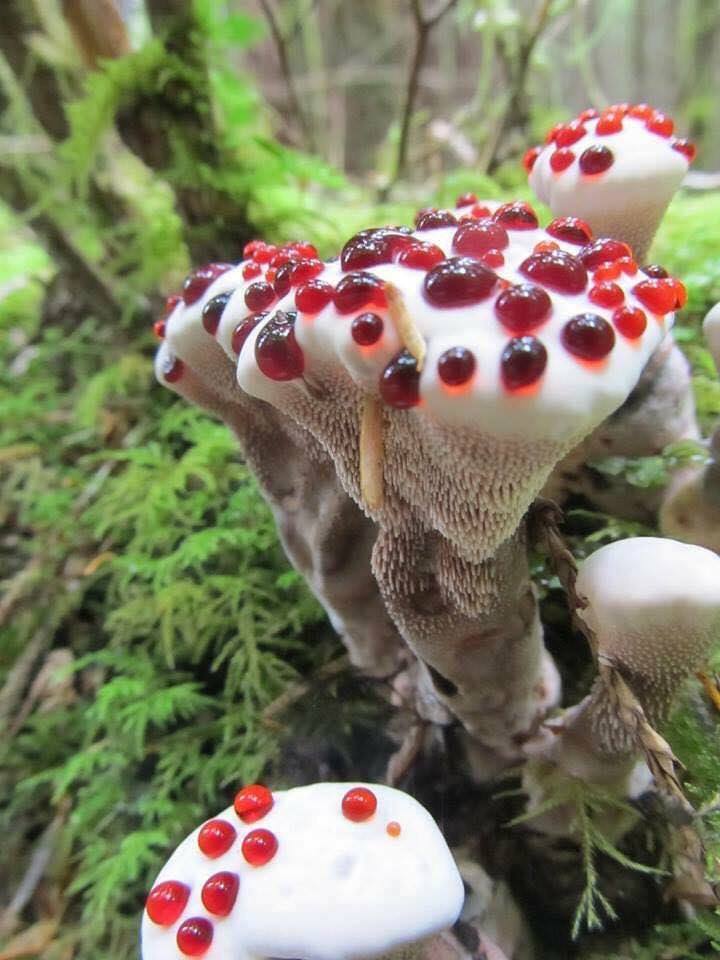
Habitat and Characteristics
The bleeding tooth fungus has teeth-like protrusions, which is one of its most distinctive features. Other fungus species either have gills or tubes that they use for spreading their spores. These tubes are shaped like teeth in this fungus. These tubes hang from the caps of fungus, giving it the appearance of a monster with teeth.
They prefer woodland habitats. They form a symbiotic relationship with other trees, including oaks, pines and birch trees. They usually produce fruit between August and October each year. They typically form the fruit in the soil and not in dead wood as with other fungus types.

The fungus likes sandy and loose soil. You’ll find them in banks, quarries, pits and tracksides. They won’t thrive in areas that are covered with other vegetation. They tend to develop in the same area and grow. They can only spread by moving their roots to other trees, which could take many years.
A particular type of soil is required for bleeding tooth fungus. It must be well-drained but with higher than normal humidity levels. They prefer to be near water bodies or where tree branches create an enclosed environment that blocks ventilation.
This fungus also doesn’t require nitrogen to grow and produce fruit. The absence of nitrogen actually makes the fruits more abundant. The old growths of the mushroom are usually the ones that bear fruit, though sometimes, the newer fungus may produce smaller fruits.
Older bleeding tooth fungi are a dullish greyish brown.
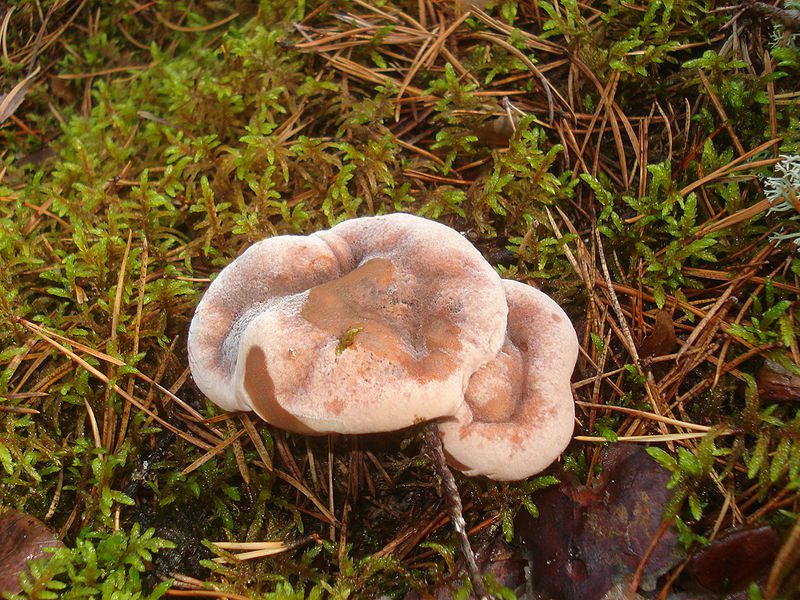
The Red Goo
We must finally address the elephant in our room. We mean the bloody, red goo. It can be pretty eerie, and you may feel tempted to run the other way if you first see this fungus.
There is no reason to be alarmed. This red goo, much like the fungus, is simply the sap of the plant. Osmosis is when the soil absorbs excess water. This happens most often when soil is soaked with water. However, the fungus doesn’t need that moisture.
With the excessive water, the fungus has become very stressed. They force the water to the top of the caps to manage the pressure to avoid getting trapped in bubbles. It turns red because of this. The answer is in the belly of fungus.
Red is the most common colour for the internal parts of bleeding tooth fungus. This is a normal part of the plant. It doesn’t mean that the plant is poisonous or feeds on blood. It is neither. It absorbs the red pigment as it travels from the roots to the surface.
It is not clear if this red sap is what causes bitter-tasting fungus. However, one thing is certain. It is not toxic and safe to eat if you can tolerate its bitterness.
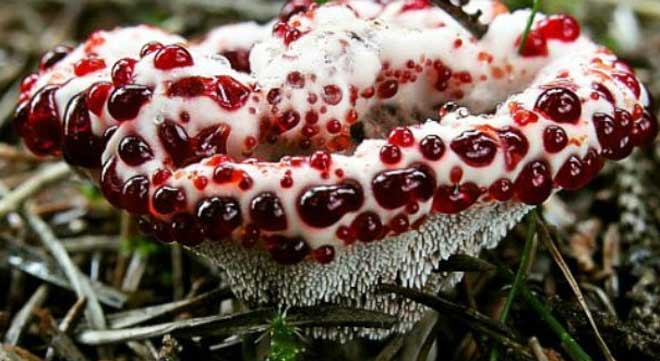
Tooth Fungus Types
The tooth fungus family is extensive and widely distributed. All the species of tooth fungus have teeth. However, they all differ in other aspects. These are the most popular species.
- Bankera Species – The large caps are covered in debris, giving the species an alien appearance. The fruits are usually white and easy to cut through the flesh. It often releases an unpleasant odour when dried.
- Hydnellum Species – This is the species to which the bleeding tooth fungal infection belongs. The flesh of the fungus can be tough to break. It can grow by blending with other vegetation or debris. The spores and teeth are usually brown. The cap can be pinkish, blue or brownish if it isn’t covered with red sap. Although the flesh is not odourless once dried, it can be used for food seasoning.
- Sarcodon Species – The caps of this species are not like other members of the tooth-fungus family. They are small and do not have any debris or vegetation mixed in them. The teeth are usually grey, and the caps are brown. Scales are often applied to the fleshy cap. It doesn’t contain any debris and has a mild odour, so it is usually dried and used for cooking.
What To Do When You Spot Bleeding Tooth Fungus
Conservation is being undertaken for many species of tooth fungus. This is due to their habitat being destroyed and their fruiting declining. The bleeding tooth fungus has been hampered by other invasive plants like bracken and rhododendron.
Protect the bleeding tooth fungus that is found in your locality. You should not disturb the habitat of the fungus or move it about as this could result in its death. You should also avoid growing humus or any other plants that could infringe upon the fungus and hinder its growth and fruiting.
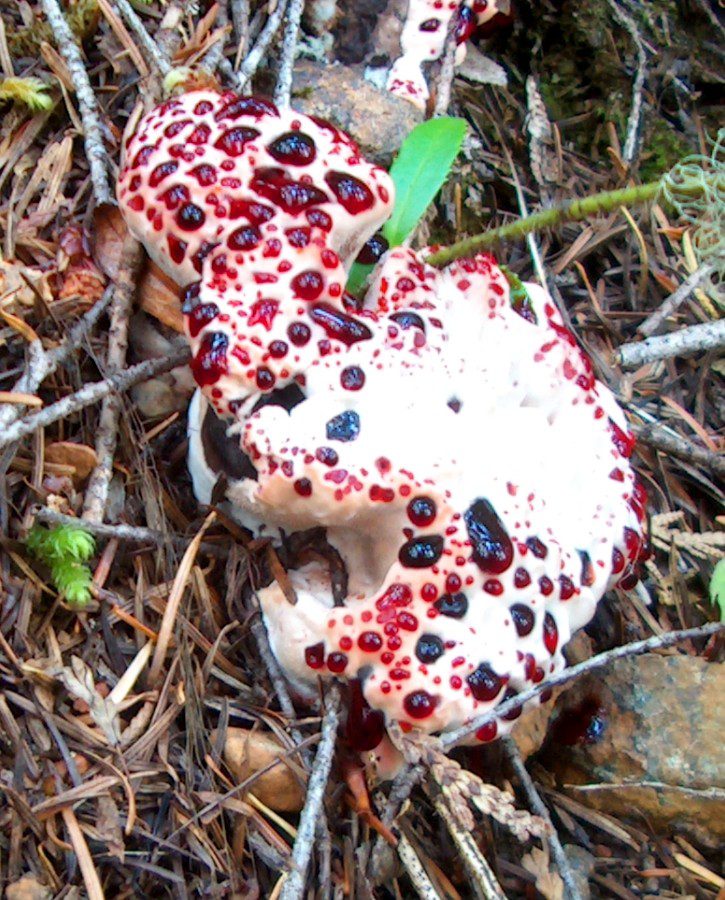
Bleeding Tooth Fungus Uses
Some species of the tooth-fungus family can be used in cooking. However, the bleeding tooth fungus is mainly used commercially for dye production and in the pharmaceutical sector. Scientists are still not sure what the exact nature of strawberry cream fungus is. Still, they know that it has antibacterial properties, making it an attractive candidate for the medical world. The bleeding tooth fungus can have beneficial effects on blood circulation due to the presence of atromentin (a chemical compound with anti-coagulant properties). It does more than just sucking your blood.
Recent research also revealed that theophoric acids are found in the flesh of the mushroom. Another chemical compound could be used to treat Alzheimer’s.
Further Reading
Amazing Facts About the Bleeding Tooth Fungus (Hydnellum Peckii)







































